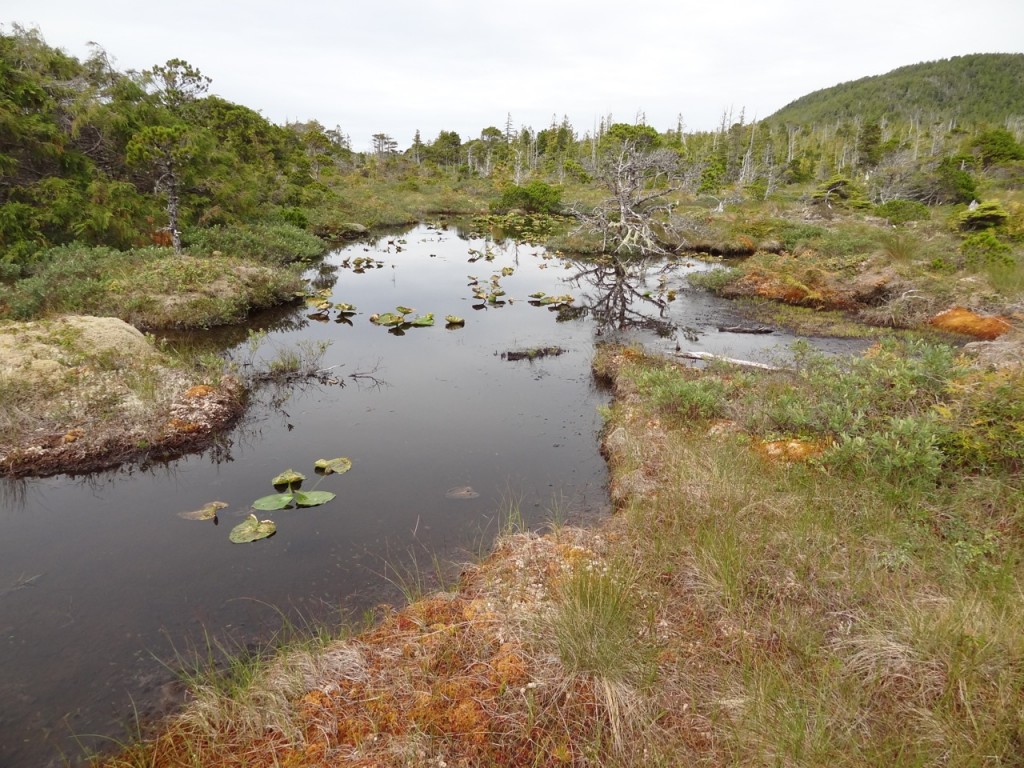
Not only have I been able to experience Porcher Island in good weather this year (= without rain and with blue skies and sunshine time and again), no, there are numerous moments here on the very first day that I never want to forget:
In the morning, I enjoy the familiar beach at particularly low tide (we have just had a full moon and the tidal range is around 6 m) with a hot pot of tea and incomparable peace and quiet. I am watched by two bald eagles circling majestically above me.
After a late breakfast together, the four of us set off on our first exploration tour of "our" piece of wilderness on the Canadian coast. Even on the beach, we are amazed by the hundreds of seabirds and the finds: Moon snails, eagle feathers, lots of large shells, gigantic dead beetle snails and bizarre pieces of wood, but in between there are always washed up plastic bottles and then a large green glass ball - an old Japanese fishing net buoy! Then one of the ravens, which always amaze us on the island with their flying skills and strange sounds, lets us get as close as 4 m so that Sami can take some great pictures.
I am delighted to see my beloved "cotton grass moor" again and some very striking ancient giant trees. Thanks to these, I can actually find all the important areas again, even without GPS. In the process, however, I partially lose the relatively dry path to the "butterfly hill", which I had trampled last year (the moth counts had taken place here last year). Unfortunately, this means that Hannes is suddenly about 80 cm shorter: he is up to his waist in one of the moss-covered water holes.
At the top of the moor, we are simply overwhelmed by its raw beauty. We marvel at the many small white gentians (Gentiana douglasiana) and the sticky rush lilies (Tofieldia glutinosa), which are in full bloom this year. Fred is particularly pleased with the green germer (Veratrum viride), which is already in flower and is being pollinated by a few small click beetles. And my heart sinks when I see four cranes flying over the moor. Around us, the moss cushions shimmer in many shades of green, brown and orange, spotted with dark red cushions and interspersed with small and large patches of water. In between we find cloudberries (Rubus chamaemorus) and black crowberries (Empetrum nigrum), of which I enjoy quite a few. (Thanks, Fred, for all the botanical explanations!) - And the midges buzzing around give me lots of stings/bites: a later count will reveal 93 in the "visible places".
Back on the beach, we can watch a colorful spectacle in the sky for about five hours that puts any TV program in the shade! Cloud formations and the slowly sinking sun transform the sea and sky into shimmering pink, yellow and bright blue areas. Strange formations appear on the horizon: mirages make the Haida Gwais appear to us in unusual formations.
Behind us, a cheeky squirrel investigates our compost hole ("Bear Trap"). It lets us come right up to it and finally climbs over Hannes, who is lying on the ground taking photos, and onto my shoulder. For minutes, it gambols around on me, tries my finger, tries to catch some hair flying in the wind and even lets me stroke it!
We enjoy the evening natural spectacle in the sky to the full and eat our dinner at the same time: Fred eats a "meatoid" tin of "ham" that was still left on the island from last summer. Hannes and Sami perfect the stick bread by rolling bacon and cheese into the dough and spreading the whole thing with maple butter towards the end and then letting it caramelize.
Finally, our "TV program" is rounded off by a group of orcas that glide slowly through the shimmering evening sea, showing us their dorsal fins and sometimes even their flukes.
What a day!















